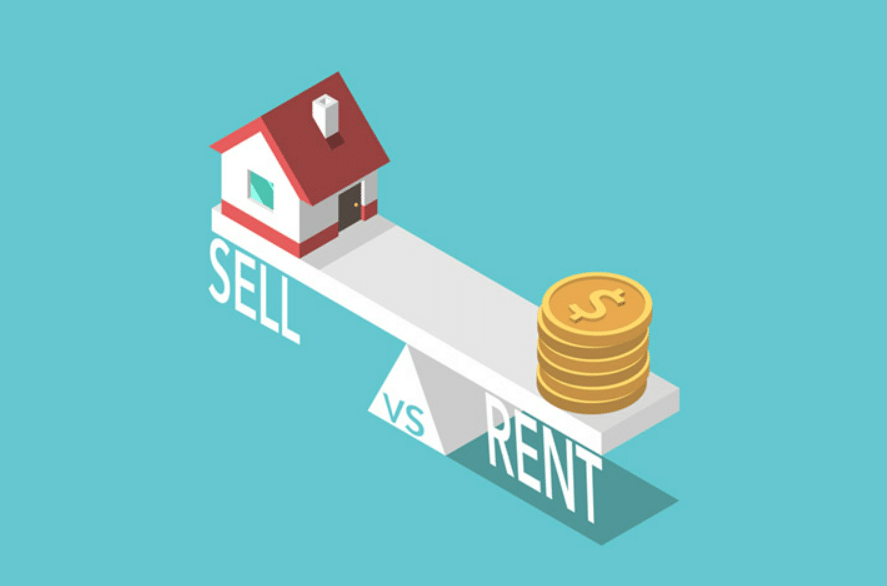Renting vs. Selling Your Home During a Relocation Assignment

Forgoing the for-sale sign in favor of renting your property might be advantageous for home-owning assignees and transferees.
One of the most challenging prospects of relocating for a mobility assignment can be deciding what to do with your home. Assignees may assume selling is their only option, but parting with your home is sometimes easier said than done.
If you’re the sentimental type, the idea of putting your family’s much-beloved house on the market can be a melancholy endeavor. Or maybe you’re pragmatic and regard your property as a worthwhile investment opportunity and are curious if taking on tenants is a viable business choice. Whatever your hesitation, converting your home into a rental property instead of listing it for sale might be the alternative you’ve sought.
While there are potential benefits to either selling or renting out your house, understanding rental real estate taxes can help you make the best decision regarding turning your home-sweet-home into a rental.
Converting your old property into a rental home
If you believe your present home is a promising investment, transforming it into a rental property may be a suitable alternative to selling. If property values are stable or increasing in your old work’s location, or you’d like to return to this residence in the future, renting can be an appealing option.
If you actively participate in rental real estate activity, you might be able to deduct up to $25,000 of annual rental loss against other income. The IRS considers you to be actively participating if you’ve made management decisions such as: approving new tenants, deciding on rental terms, approving expenditures, and other similar choices.
In some instances, rental activity can generate a “paper” loss with a positive cash flow. This paper loss is produced because of the depreciation of the house and related improvements. Any personal property in a rental unit, such as stoves, air conditioners, refrigerators, and other appliances, is also considered.
The following expenses are also deductible:
- Pre-rental expenses include ordinary and necessary expenses (including depreciation) for managing, conserving, or maintaining rental property. These expenses must occur between the timeframe of the property being made available for rental until it’s rented.
- Repairs to your property are deductible unless they materially add to the value of your property or substantially prolong its life. Otherwise, these are considered depreciable improvements.
- Vacant rental property expenses for managing, conserving, and maintaining the property while your former residence is awaiting rental.
- Transportation and travel expenses from your new work location to your old residence to inspect your investment once a year.
- Advertising for tenants.
- Cleaning and maintenance service.
- Painting.
- Utilities.
- Fire and liability insurance.
- Real estate taxes.
- Interest on mortgages.
- Commissions and management fees.
Vacation homes rules
Another prospect is to transform your old property into a vacation rental home. This option is beneficial mainly if the property is located in or near a recreational area. If you decide to go this route, be mindful that qualifying for vacation home rental status requires that you don’t use the home for personal purposes for more than 14 days, or 10% of the total days it’s rented to others.
How do you calculate your depreciation tax deduction on your old home?
When you transform your property from personal use to a rental, the amount allowed for depreciation is the lesser of fair market value or its adjusted basis.
Fair market value refers to the property price when exchanged between the seller and buyer. Both parties should have reasonable knowledge of all relevant facts, and neither party should need to sell out of necessity.
Tip: sales of similar property on or about the same date may help you determine the fair market value of your property.
An adjusted basis on the conversion date is the original cost of the property plus the cost of permanent improvements since it was acquired. The land isn’t depreciable, so only include the cost of the house in your calculation.
Tip: to arrive at a reasonable basis for separating the total purchase price between house and land, consider reviewing relevant real estate tax bills that show a mill rate broken down between land and buildings.
Once you have the amount allocated to the house, add the costs of any improvements you’ve made prior to converting it to rental property investment.
Examples of justifiable improvements include:
- Remodeling kitchens and baths
- Adding porches, patios, and decks
- Finishing basements
- Wall-to-wall carpeting
- Adding recreation rooms
- New water heaters
- New roofs
- In-ground pools
Adding these expenses gives you your home’s adjusted basis cost. This adjusted basis cost can then be used to calculate the straight-line method of depreciation.
Suppose you decide to use personal property such as furniture or appliances in rental real estate. In this case, you must use a 5-year recovery period and a double-declining balance depreciation method with a “half-year convention” and depreciate those items separate from the house. These items’ adjusted basis will be lesser than the cost of similar “used” items at the time you convert them to be part of the rental real estate activity.
Lastly, keep in mind that both the depreciation on the real and personal property would be considered deductions from the time your old residence is ready and available to rent.
A benefit of selling: the sale of residence exclusion rules
Sometimes, selling your home may benefit you more than converting it to a rental. For example: if you and your spouse decide to sell a house you’ve used as your principal residence for at least 2 of the past 5 years, you can exclude up to $500,000 of gain ($250,000 if single). This exclusion applies to one sale every two years.
However, if you convert your home into a rental property, your profit is subject to capital gains tax when sold. This policy can be avoided by moving back to the house to satisfy the 2 out of 5 years residence rule prior to selling. On the other hand, keeping the property as a rental is advisable since the loss would be deductible if you’re expecting a loss.
Unsure about renting your residence?
Determining whether or not to transform your home into a rental is never a straightforward decision or undertaking. Ineo provides global mobility programs and their employees with expert tax advice so you can be confident in all aspects of your relocation, including your real estate decisions. Contact our industry professionals to learn how we can support you in every stage of your global mobility assignment lifecycle.
Global Mobility Resources
Learn more about what’s going on at Ineo and insights into the complex world of global mobility from the industry’s top thought leaders and innovators.
Request A Demo
Whether you are new to the world of global mobility or you’ve been in the business for a while, Ineo is here to assist you.
The best way to learn how Ineo’s global mobility software can help your company revolutionize your global mobility program and support your business strategy is to see it in a demo.
Fill out this form to get started today.
Get Started

